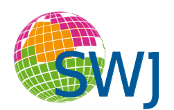Five Challenges for the Semantic Sensor Web
Review 1 by Christoph Schlieder:
The article identifies five challenges of the Sensor Web, that is, the combination of sensor networks with Web services, and describes how Semantic Web technologies contribute to solutions. Not working myself in this field, I gained an interesting overview of current research activities.
Some of the challenges appear also in other areas to which Semantic Web technologies have been applied. For the issue of data integration, the authors point to a number of aspects that are unique to the sensor web use case (e.g. querying of stream-based sources). However, it becomes less clear in what respect the challenges of data quality and rapid application development are specific to semantic sensor networks.
The authors clearly explain how today's Semantic Web technologies contribute to solving a variety of problems of sensor networks. What about effects in the inverse direction? Is there a specific way in which the Semantic Web needs to evolve to suit the needs of semantic sensor networks? Perhaps this could be addressed in the conclusion.
Minor issues:
p.2 Section 1 ends with "We will now review some of the most relevant challenges …" and section 2 starts with "… we review some of the most relevant open challenges …". This redundancy could be avoided.
p.4. "different applicable areas" -> "different application areas"
Review 2 by Werner Kuhn:
This is a very good overview of substantial challenges in the sensor web. The limited space does not allow much more background, of course. Still, a few more references would be appropriate, for example on:
- SensorMap (second occurrence)
- DSS for environmental management
- recent work on sensor semantics and ontologies from the GIScience area, as for example published in GeoS (a shameless plug!).
Details:
- eliminate as many "etc." as you can; they are mostly not needed, especially if there is a "such as" or similar before them
- work done *on* (not in) this topic
- drop "the following dimensions, among others:" following "All Sensor Web efforts are characterized by"
- "by means of the usage of" should just be "by means of"
- "abstraction level *at* (not in) which"
- "same applies with respect to" should just be "same applies to"
- "some others do not" should just be "some do not"
- "Other amount of work" should just be "Other work"
- "and examples of approaches" should be "and an example of approaches"
- "work is being done on" (not in)
- "definition of data according..": should this be annotation rather than definition?
- "open challenges" should just be "challenges".

Comments
Review 2 by Roberto García:
The paper covers a very interesting application domain where the Semantic Web contributions might become very relevant and attract a lot of attention. The paper identifies 5 challenges in this area, where Semantic Web can make significant contributions.
The paper does success in what it seems its main objective, to get us interested in the Semantic Sensor Web, its challenges and opportunities, but leaves the reader willing for more.
It is true that many references are provided and the reader can follow them. However, it would make the paper much more valuable, and even a reference paper, if some more detail about the challenges and the ongoing work was provided. This is specially true in the case of the "real time" issues, which seems the challenge more relevant and specific to the Sensor Web.
Moreover, in order to clarify the overview of the challenges and even make them seem more exhaustive (in number), it would be nice to have a figure showing the architecture of a common Semantic Sensor Web (SSW) application or the typical sensor data life-cycle, from sensors to users.
Such a figure might help identifying other potential challenges that, despite not being SSW specific, might be also very relevant. For instance, by including end-users into the picture, I might recommend including a new challenge to the list.
The challenge is about how to help users interact with and make sense of the potentially enormous and heterogeneous amounts of data coming from the Sensor Web. And how the Semantic Web can help here when interacting with streams of data, dynamically building queries over streams of data, highlight that there are different levels of quality in the data, etc.
Of course, the idea is not to propose solutions to them, but to point out them and get also the attention of people working on Semantic Web user interfaces.
Minor issues:
p.1 Introduction: the introduction begins with a paragraph that is identical to the beginning of the abstract. The introduction might be shortened to leave room for detailing the "real time" issues and including a figure.
p.2 Introduction: the paragraph listing the dimensions of Sensor web efforts is hard to read. It might be easier if formatted as bullet items, one for each dimension (e.g. variability and heterogeneity, rich data sources, etc.).
p.4 Section 3: "Linked Data for data streams" reads a little awkward. What about "streams of Linked Data"?